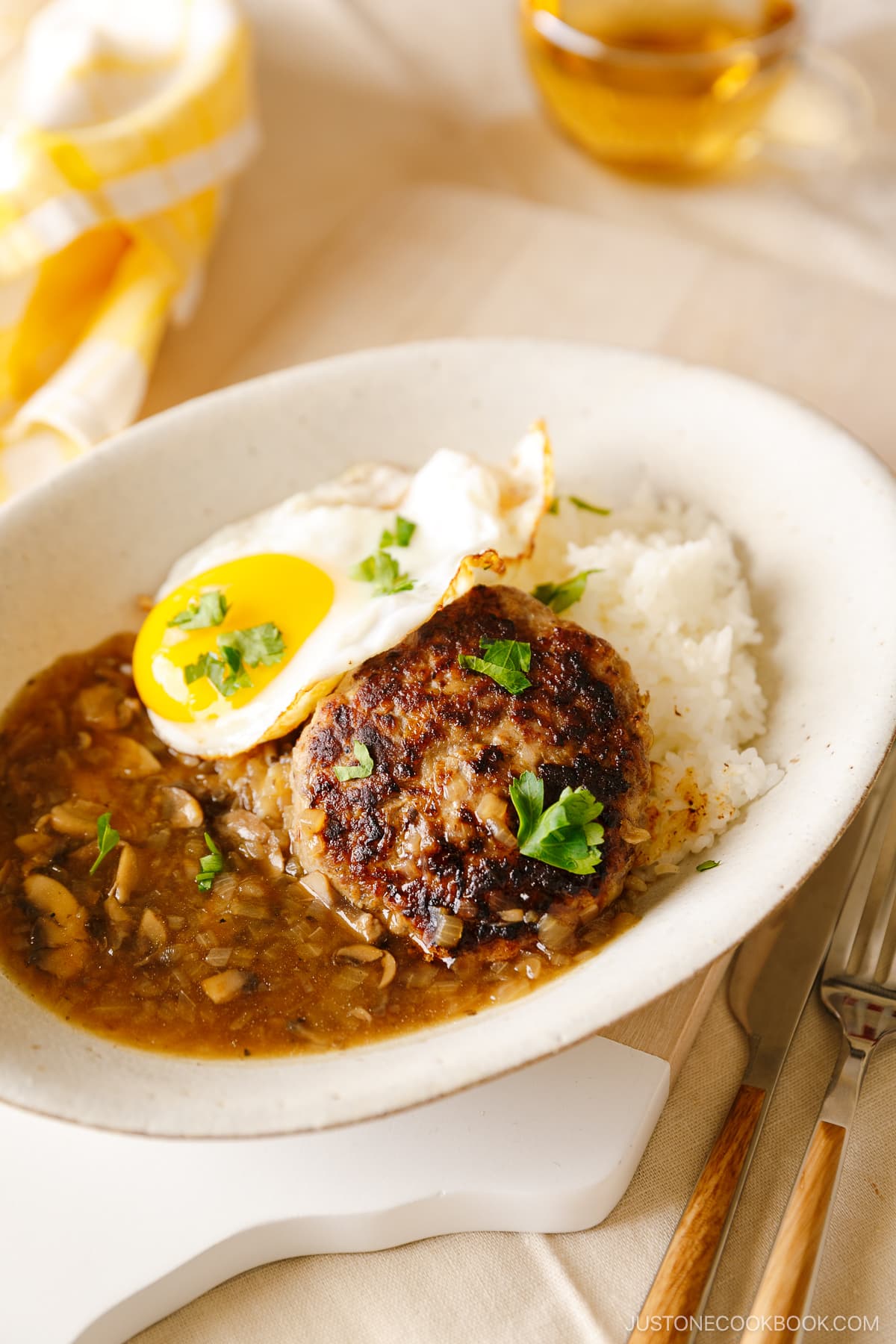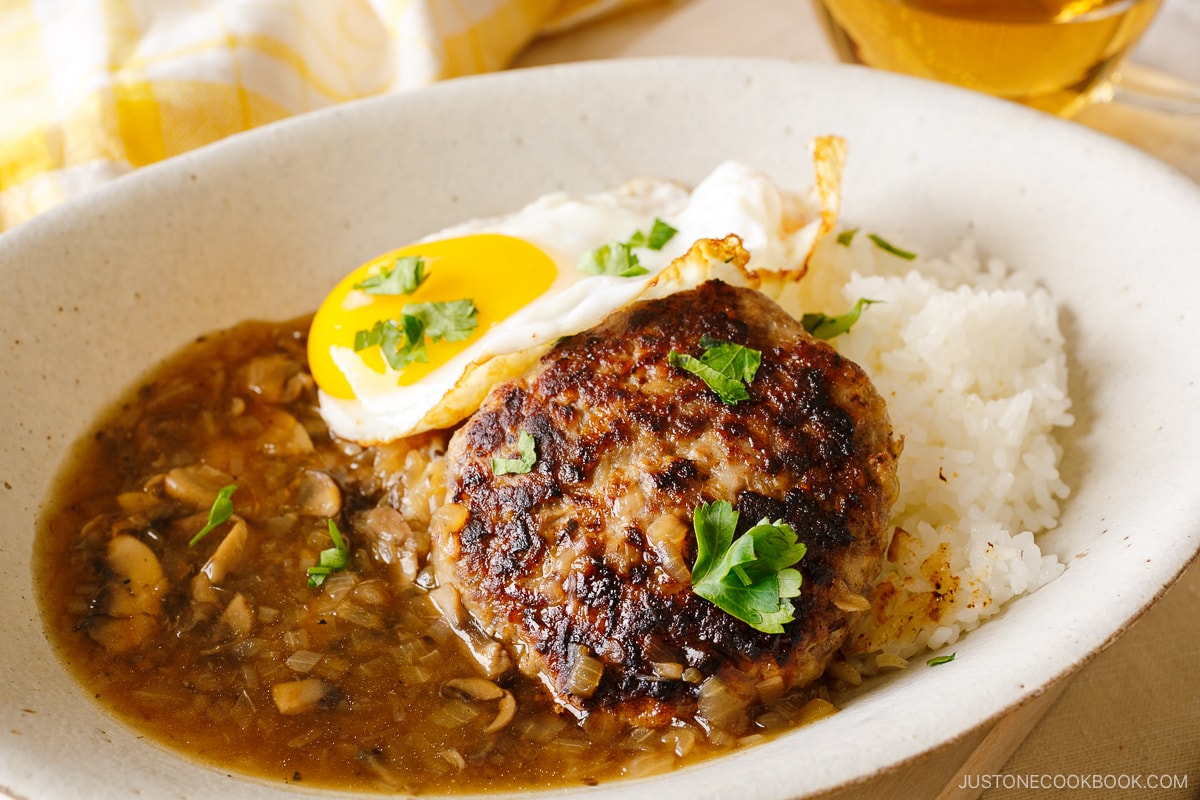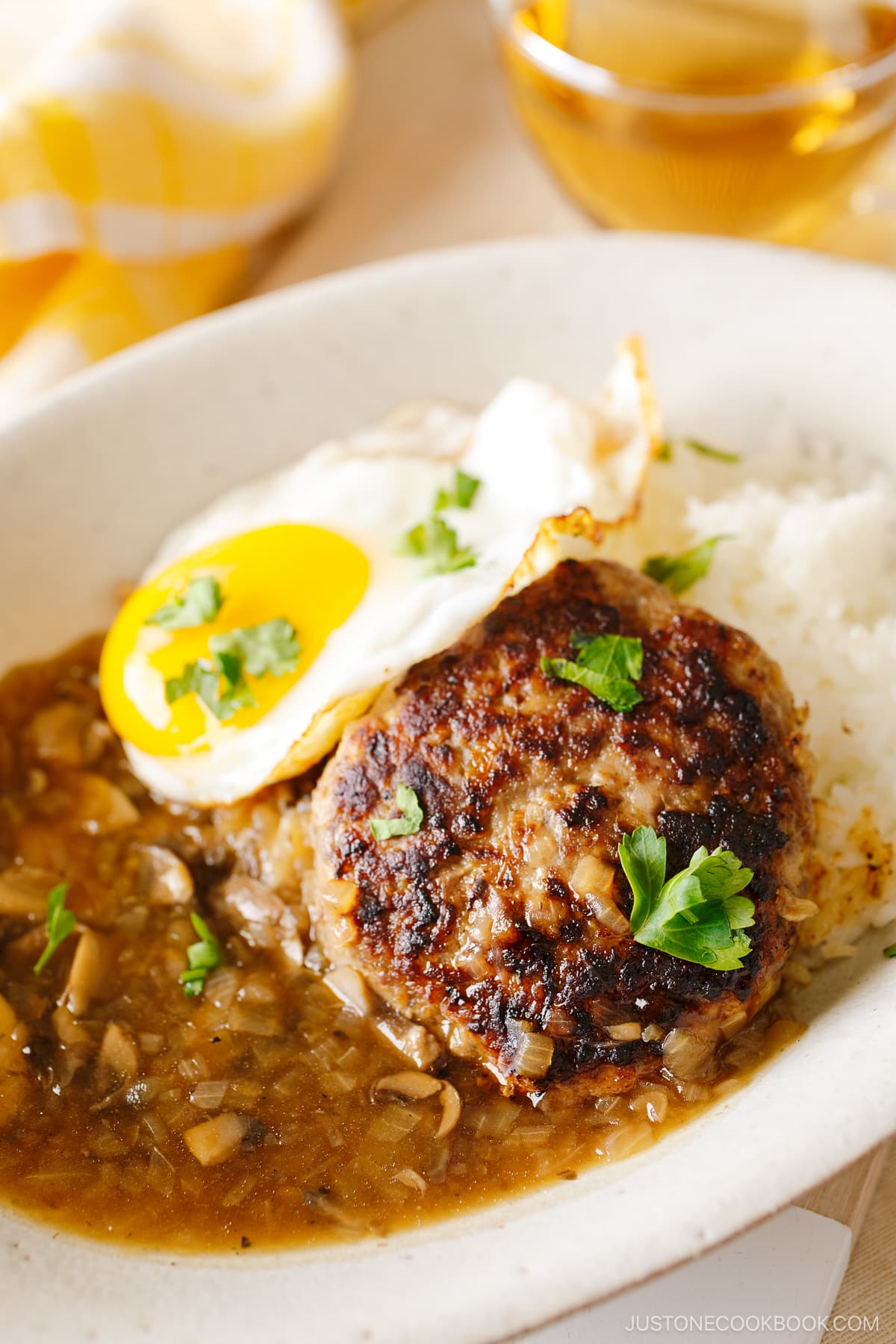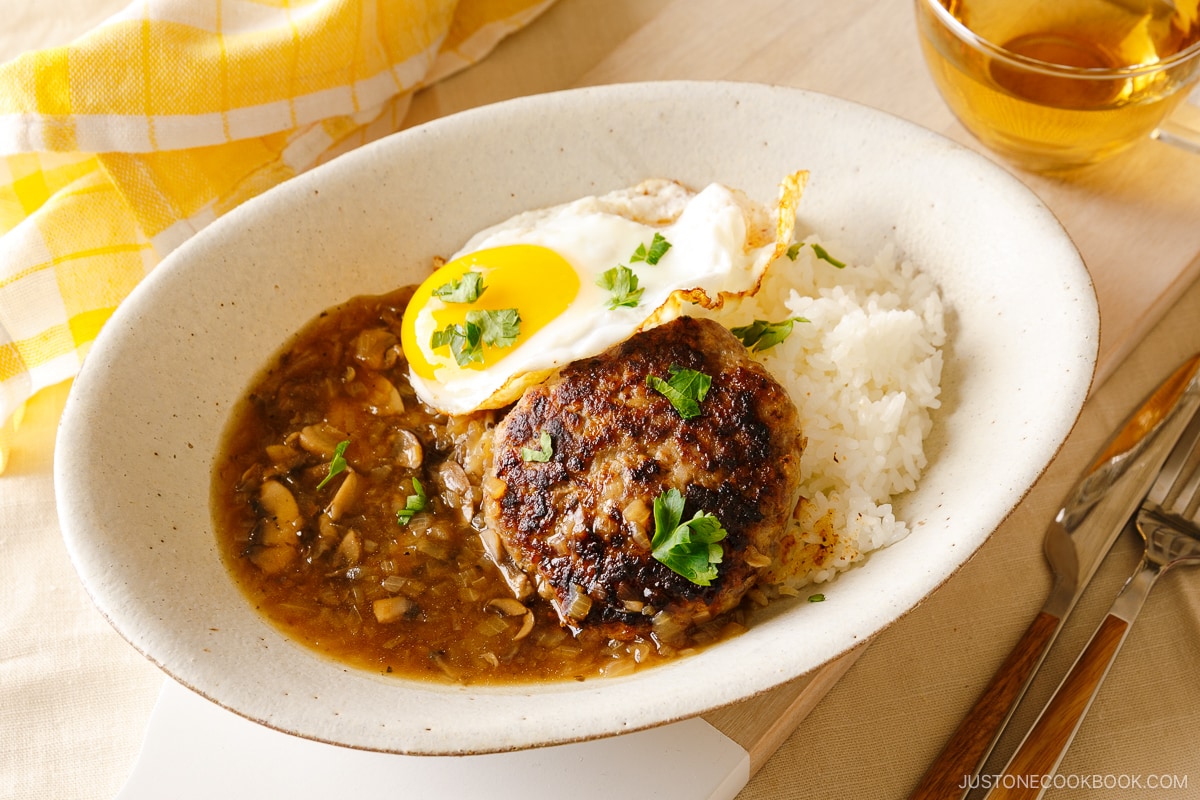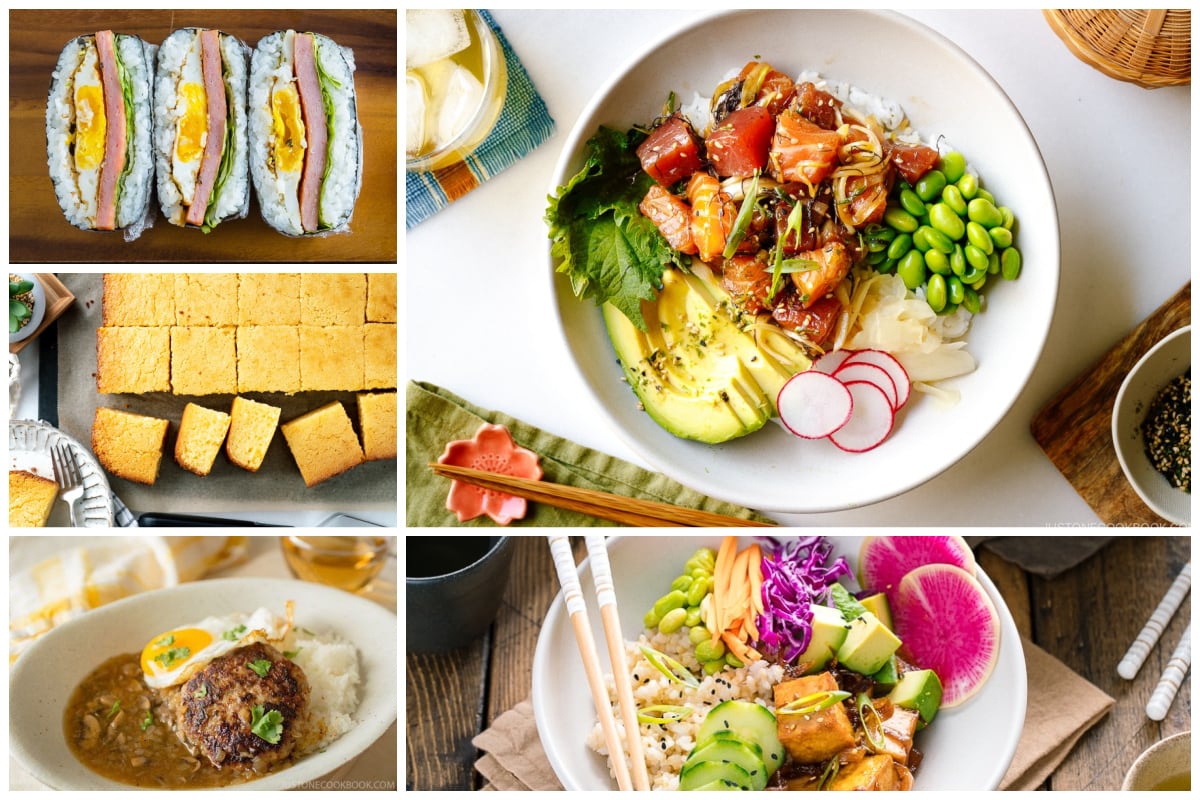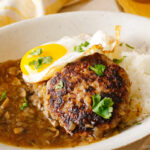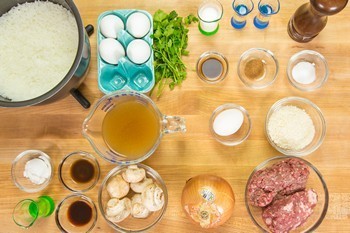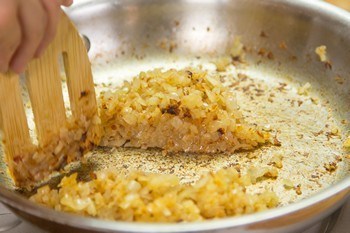Loco Moco is one of the signature Hawaiian dishes that is extremely popular in the Aloha state and also in Japan. I grew up eating this Japanese-influenced American-style hamburger at family restaurants that served up amazing lines of comfort dishes. Yes, we love hamburgers in Japan. These days, I love making loco moco whenever my kids have any sports activities and would get super ravenous for dinner. Juicy hamburger steak with fried egg and rice—that’s a combo to feed hungry kids!
What is Loco Moco?
First, we must talk about the name, of course. How did a burger with a rice dish get this catchy name? What does loco moco mean in Hawaiian? Well, loco is the Spanish word for crazy and moco means burger. According to one of the popular theories, loco moco was first made in the late 1940s by Ms. Nancy Inouye of the Lincoln Grill restaurant in Hilo, Hawaii. She was asked by a group of young surfers to make them something cheap, good, and extremely filling. Their request was met when she served them a dish with a huge plate of white rice topped with a burger patty and brown gravy! Satisfied, the surfers named the dish after one of their buddies George Okimoto, whose nickname was “crazy”. George Takahashi, a student at Hilo High School, was studying Spanish at the time and decided to call it loco since it rhymes with moco. So, here we have the story of loco moco. There are many variations of loco moco, but the traditional loco moco consists of white steamed rice, topped with a juicy hamburger steak, flavorful gravy, and a fried egg. The egg is usually cooked sunny side up so the runny egg yolk adds a yummy richness to the dish. Besides beef patty, loco moco is sometimes topped with spam, shrimp, bacon, tofu, teriyaki beef and chicken too.
Loco Moco in Japan
Outside of Hawaii, loco moco (ロコモコ) is just as popular in Japan and usually served in cafe-style restaurants, yoshoku (Japanese-western) restaurants, or enjoyed at home. Since Hawaii is no. 1 travel destination for the Japanese, we naturally adopted this delicious dish and made it part of our menu. However, the typical Japanese version of loco moco is served with thick “hambagu sauce”, which is made of ketchup and Worcestershire sauce (or tonkatsu sauce) instead of traditional gravy made of beef broth or stock. The recipe I’m sharing today is my own take on the traditional loco moco.
Why You Should Make this Recipe
Incredibly juicy and tender hamburger patty! I use my Hambagu recipe for the meat patty which uses both ground beef and pork. The ground pork adds additional flavors and makes really juicy patties compared to using ground beef only. Caramelized onions for meat patties and gravy. This might seem like an extra step but caramelized onions add a big depth of flavor and sweetness to both meat patties and gravy. Easy to make and freezer-friendly! You can store the patties in the refrigerator for 3 days or in the freezer for a month.
How to Make Loco Moco
The Ingredients You’ll Need
A combination of ground beef and ground pork Onion Egg Panko Milk Seasonings: Worcestershire sauce, nutmeg, salt, pepper, butter Gravy: Button mushrooms, olive oil, beef stock, Worcestershire sauce, soy sauce, salt, pepper, potato/corn starch
The Cooking Steps
How to Serve Loco Moco
Serve steamed rice on individual plates. Transfer the patties to the plates, pour the gravy, and top with a fried egg. Enjoy immediately! You can store leftover hamburger patties in an airtight container and keep in the refrigerator for 3 days or in the freezer for a month. Whether it’s for lunch or supper, this dish is very easy to make and will be ready in less than 45 minutes. It’s a wonderful comfort meal on any day of the week. I hope you enjoy my version of loco moco recipe. Now, many of my readers are from Hawaii. What’s your favorite style of loco moco and how do you prepare it? Please feel free to share your recipe in the comment below so we all can try it out!
More Hawaiian-Inspired Recipes You’ll Love
Tuna Poke Poke Bowl Spam Onigirazu Furikake Chex Mix Butter Mochi
Wish to learn more about Japanese cooking? Sign up for our free newsletter to receive cooking tips & recipe updates! And stay in touch with me on Facebook, Pinterest, YouTube, and Instagram.
